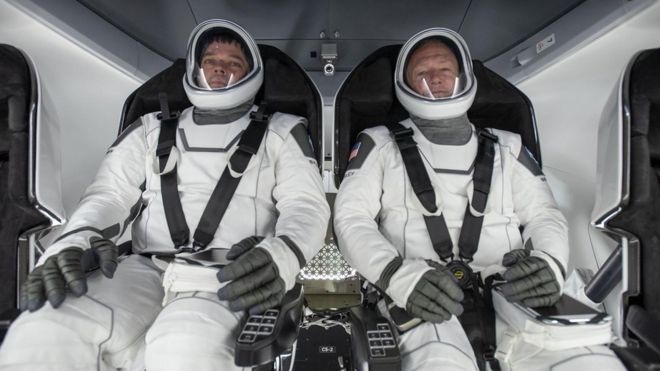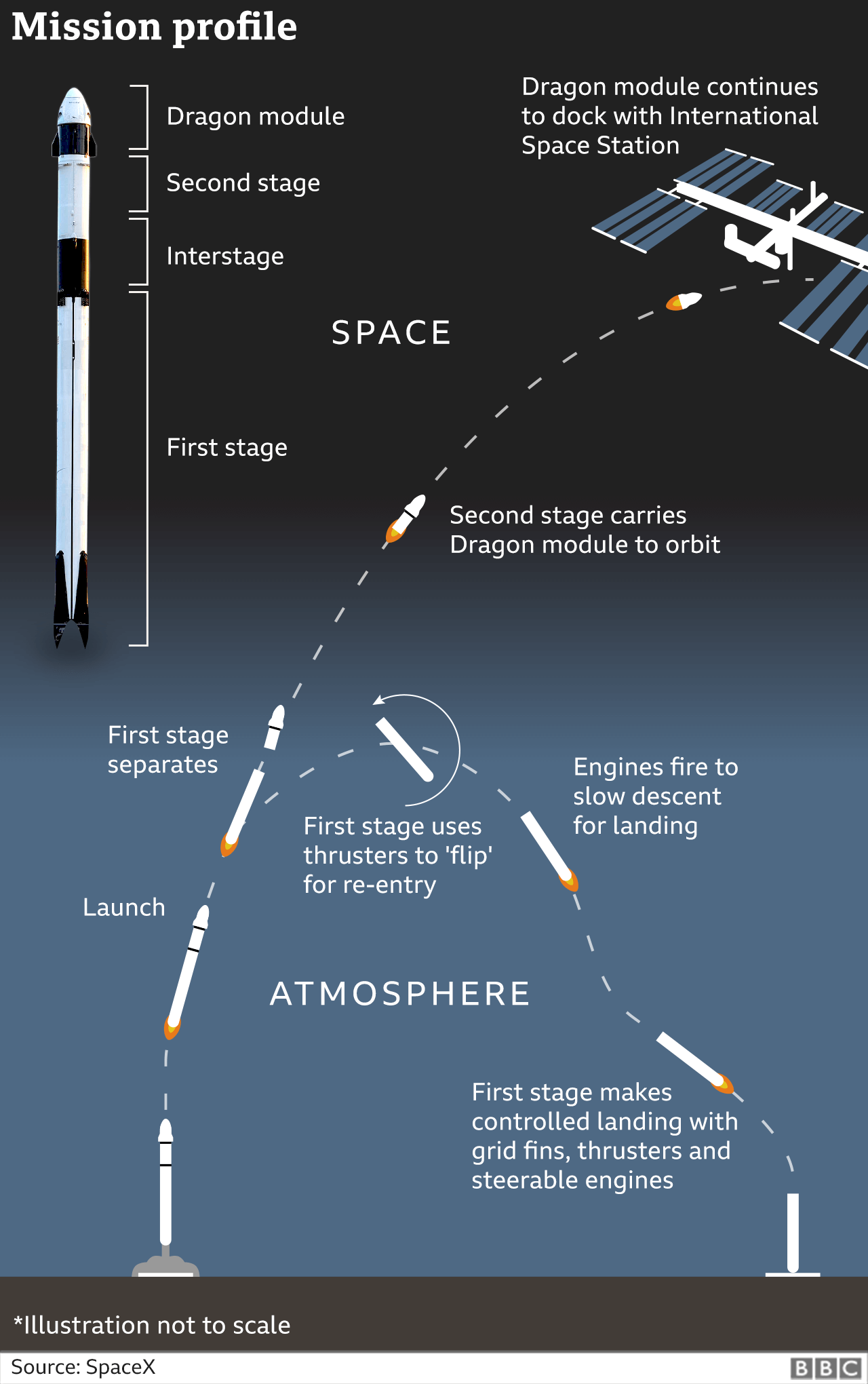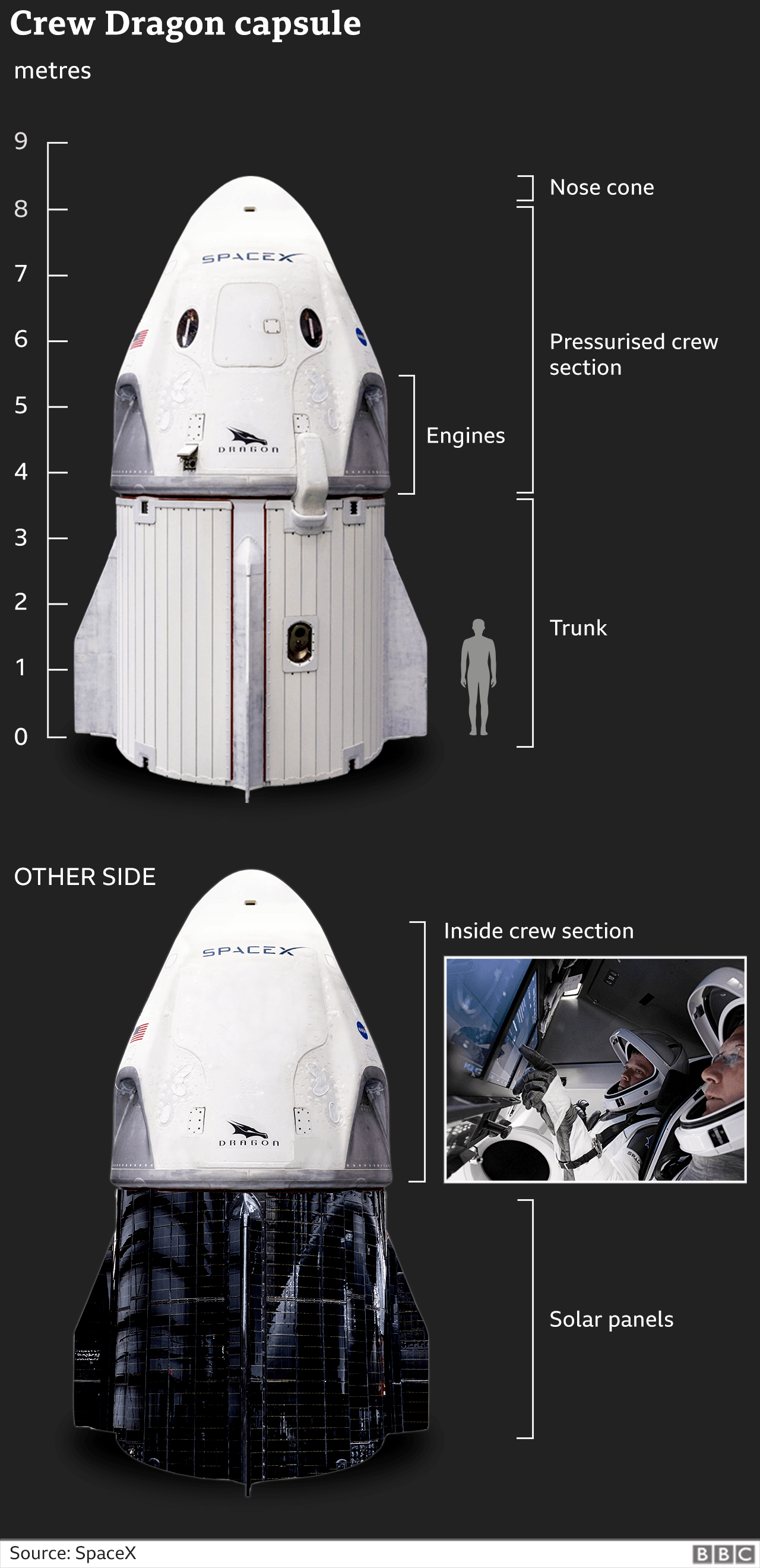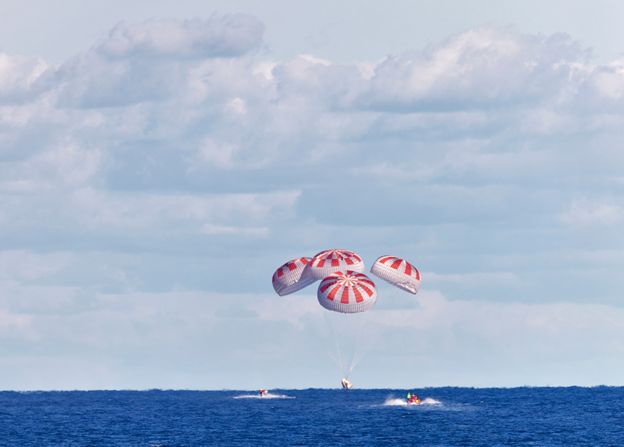This is a New Day After The Space Shuttle, Believe Me and with a Crazy President/Pandemic We Need New Days
The trip is been scrubed for now because of the weather. Next window seems to be on Saturday.
 NASA
NASA
On Wednesday, the California company SpaceX will launch a mission to the International Space Station (ISS). It's something the firm has done many times before, taking cargo to the sky-high laboratory. But on this occasion, the firm will be transporting people.
It's one of those seminal moments in the history of spaceflight.
When Nasa astronauts Doug Hurley and Bob Behnken lift off atop their Falcon-9 rocket, inside their Crew Dragon capsule, it will mark the first time humans have left US territory to reach low-Earth orbit in almost nine years.
But more than that, it sees a shift to the commercialisation of human space transportation - of companies selling "taxi" rides to government and anyone else who wants to purchase the service.
This page details the key phases in the mission sequence.
Launch will occur from the Kennedy Space Center's Complex 39A. This is the famous Florida pad from where the Apollo 11 moonwalkers and the very first shuttle, Columbia, also began their missions.


Timing is precise. The Falcon must leave the ground at 16:33 EDT (20:33 GMT / 21:33 BST), or the astronauts won't be able to catch the ISS which passes overhead at 27,000km/h (17,000mph).
Falcon-9 is a two-stage rocket. Its lower-segment will fire for 2.5 minutes before shutting down and separating. This will leave the second stage to burn for a further six minutes to get Dragon into orbit. Once detached, the capsule will then make the rest of the journey to the ISS using its own thrusters.
The second stage of the rocket will be commanded to burn up in the atmosphere. The lower-segment of the booster aims to touch down on a drone ship in the Atlantic. This is a SpaceX speciality that sets its Falcon apart from all other orbital rockets in use today.
It seems remarkable but Nasa astronauts have not had the use of a brand new spaceship design for 39 years. Not since John Young and Bob Crippen climbed aboard the Columbia orbiter. Their shuttle had dials, switches and a control stick. Dragon is all touchscreen.
It's an automated vessel so it plots a path to ISS by itself, but Hurley and Behnken must practise manual flying in case there is some sort of anomaly.


Dragon Capsule was conceived to handle every imagined scenario, including a failure of the rocket on the pad or in flight. If this happens, the ship will use a powerful in-built propulsion system to push itself to a safe distance. SpaceX has rehearsed this possibility both on the ground and in mid-air.
This mission should see Dragon reach the ISS after about 19 hours of flight. The capsule will line itself up with the bow of the space station and approach at a relative speed of just a few centimetres per second. Once attached, hooks make an airtight seal.
The length of Hurley's and Behnken's stay aboard the 420km-high ISS is not yet fixed.


It should be more than a couple of months but is unlikely to be longer than 120 days. Engineers say the solar cells on the Dragon degrade in orbit and so Nasa is sure to bring the crewmen home well before the hardware's performance is compromised.
The descent to Earth won't be rushed. The astronauts plan a two-hour free-flight to further test onboard systems and procedures. When the de-orbit burn is eventually called, Dragon will be protected in its fall through the atmosphere by a heat shield. Four big parachutes will slow the spacecraft to a gentle splashdown in the Atlantic, just off the American coastline.
SpaceX teams have gone over the process of retrieving the capsule many times.
 NASA
NASA
Jonathan.Amos-INTERNET@bbc.co.uk and follow me on Twitter: @BBCAmos
Comments